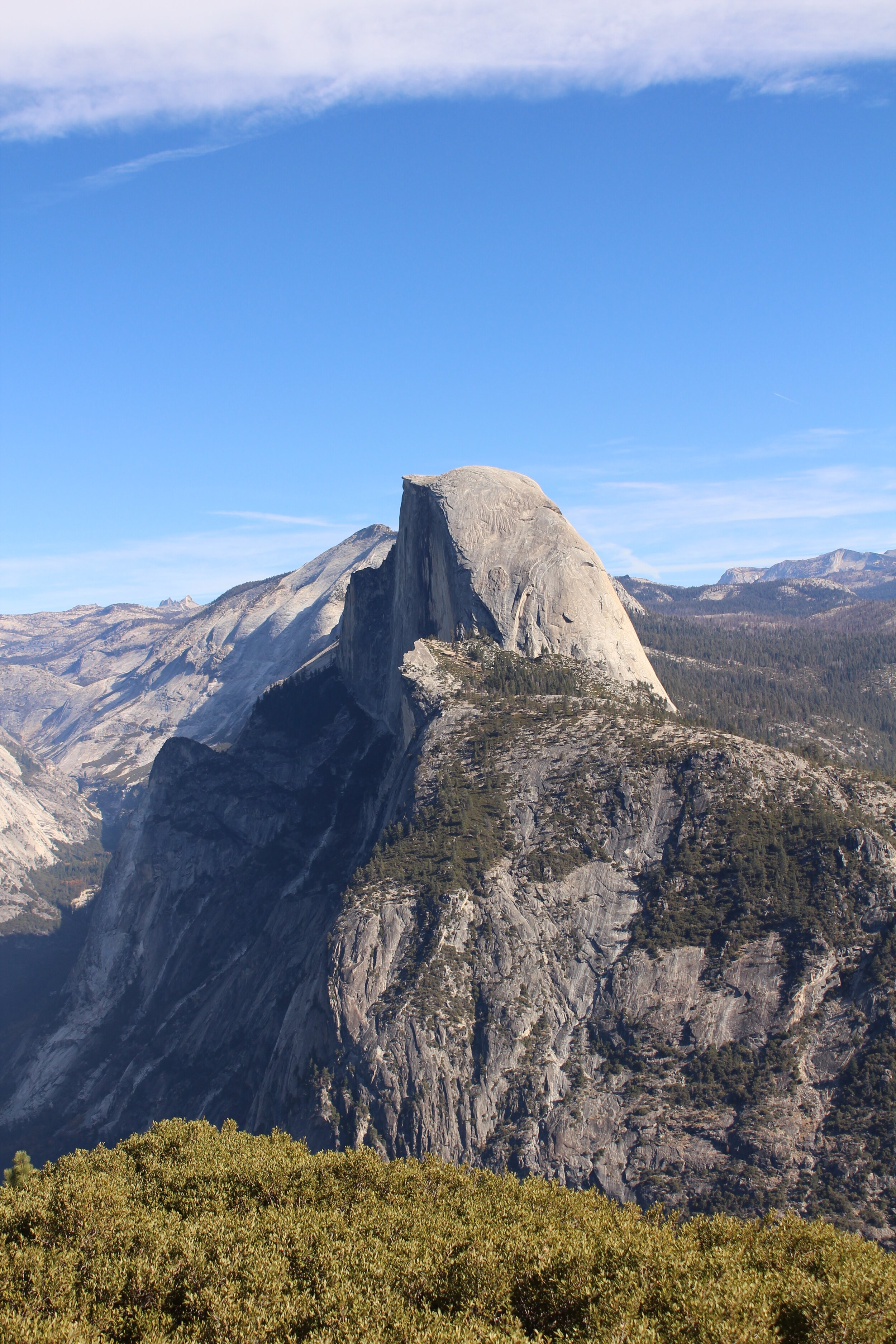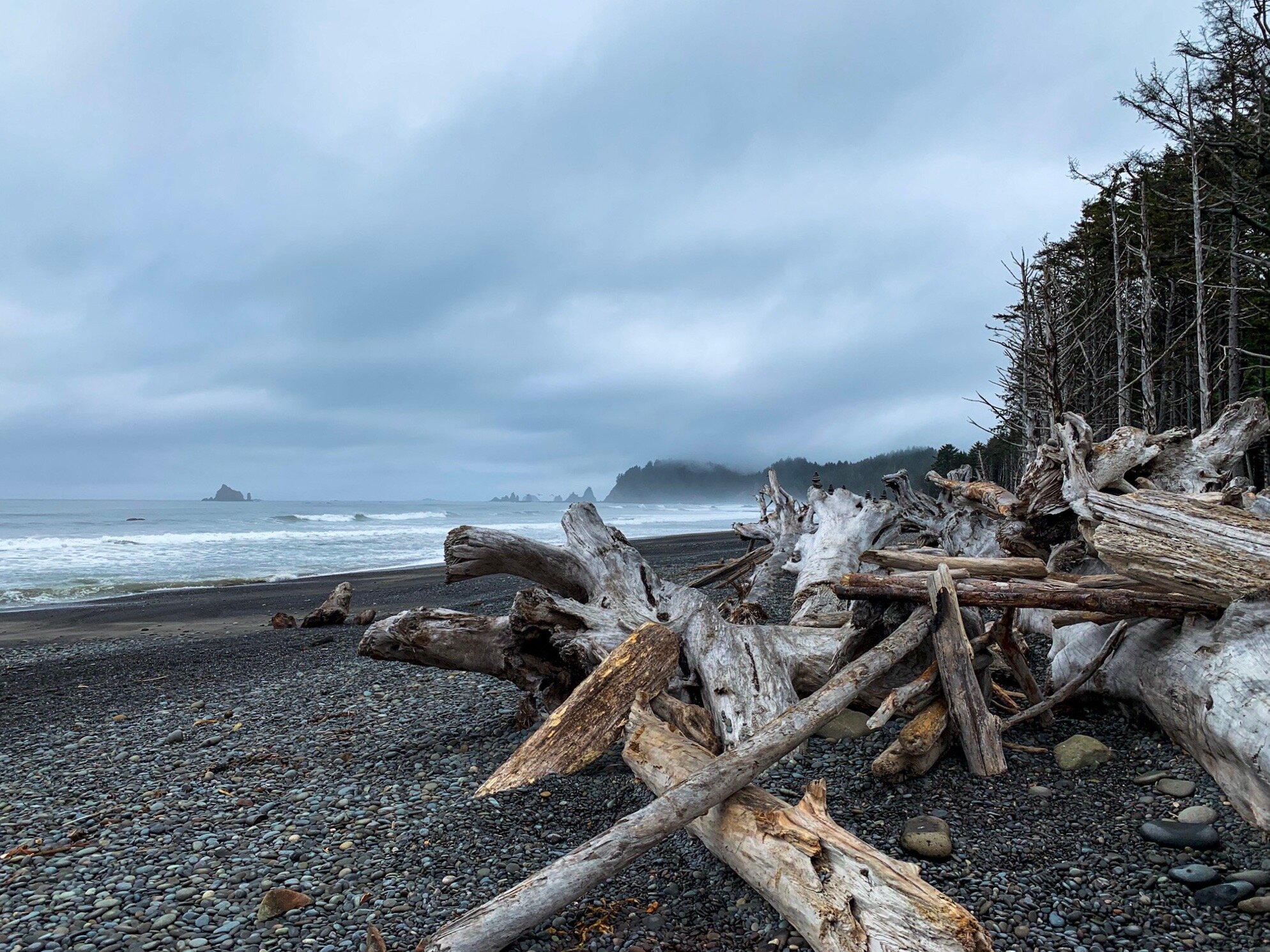At the end of my 3 month solo road trip, I made a 3 day stop in Olympic National Park, Washington. The Pacific Northwest (PNW) will always have a special place in my heart. It’s the home of pine trees, mountains, and grey coastal shoreline. I first visited Washington as part of a day trip to Portland during the solar eclipse season of 2017, when I went up to Oregon for the very first time. This time, I came at Washington from the East, after visiting Glacier in Montana, and slowly made my way to Olympic about halfway through the week that I spent there.
Olympic is an incredibly unique National Park. It’s home to a vast array of different landscapes and ecosystems, and has a strange layout in terms of its road system. Olympic is known for its temperate rainforest, and is a favorite among backpackers and long distance hikers from all over.
This is my guide to Olympic National Park, and why you should add it to your bucket list.
Rialto Beach, Shore Section, Olympic National Park, WA
Getting to Olympic
Olympic has a strange layout in that you cannot drive through the park, you can only drive around it. Of course, you can drive into certain sections, but you can’t drive straight through, so you have to be really cautious of where each entrance is. The good news is, as you drive the 101 around the park, you’ll pass through plenty of towns, such as the Twilight-famous town of Forks.
It’s important to know where the visitor centers are, and Google Maps will let you put in a specific visitor center when navigating to the park. Look for the Olympic National Park Visitor Center and Hurricane Ridge Visitor Center for information when you first enter the park. For extra information, the Hoh Rainforest Visitor Center is great but a little out of the way. You can also go to the Kaloch Ranger Station for help and the Wilderness Information Center for information regarding backcountry permits.
To enter certain parts of the park, such as Hurricane Ridge and the Hoh Rainforest, you will need to pay an entrance fee or show your interagency pass. It is $30 per car to enter, and your entrance fee at one section of the park will get you into the entire park for 7 days.
Lake Crescent, near Fairhomle Campground
The different landscapes
Olympic has one of the most diverse ecosystems I’ve ever experienced in a National Park. They’ve got bears and banana slugs, beaches and rainforests. Every part of the park is something completely different, and it’s important to check out each of them. The following sections will bring you through each different ecosystem (and let you know which is my favorite!).
The Hoh Rainforest
“While there are multiple temperate rainforests in the United States, the Hoh is the only one you can drive your car into,” said a ranger at the Olympic National Park Visitor Center when I first arrived. I was immediately intrigued and set out to do my big hike through the rainforest on my second day in the park. The Hoh is known for backpackers, and has three trails. Two of them are small loops near the visitor center, but the Hoh River Trail is 17.3 miles long and is used for backpacking. You don’t have to have a permit to day hike on it though, so I went to Five Mile Island and back, making for a 10 mile hike.
The rainforest is home to lush greenery, crazy wildlife, like banana slugs and their darker, invasive species cousins, and tons of tourists. This is definitely the most popular part of the park, so plan accordingly! There is a campground in the Hoh too, just make sure you’ve got your rain fly if you’re tent camping.
Hoh River Trail, Hoh Rainforest, Olympic National Park, WA
Hurricane Ridge
It’s not Washington without mountains. Hurricane Ridge is the mountainous part of the park that is most easily accessible to visitors, as you can drive straight to it! It offers clear views of the park, but is pretty far from the rest of the attractions and is one of the few spots in the park that you need to pay an entrance fee for. Unfortunately, this is also one of the only parts of the park I didn’t get to explore, because it was Labor Day and the roads were too crowded for me to make the day trip.
You can camp at Hurricane Ridge, at Heart O’ the Hills Campground.
Lake Crescent
I recently talked about Lake Crescent in my Best Lakes of 2019 post, so I’ll make this short. Lake Crescent is known as one of the prettiest parts of the park. You can camp here at Fairholme Campground, which I did for 2 nights, and it was lovely. There is a nearby camp store with food, souvenirs, and other camping essentials like ice. The lake is open to boats, kayaks, SUPs, and other water recreation, and the area has plenty of hiking trails. I personally loved the Spruce Railroad Trail, which takes you through a really cool tunnel, and goes along the length of the lakeshore.
Be careful, though, this is the only part of the park that has poison ivy.
You’ll also be nearby Elwha and Sol Duc Valley when you stay near Lake Crescent and both are worth a little day trip (although Elwha is currently closed to cars).
Lake Crescent, Olympic National Park
Shore Section
All of this mountain and forest stuff is connected somehow, but on the other side of the highway you’ll find the shore section. The Olympic shoreline is easily my favorite part of Olympic National Park. It’s my Pacific Ocean that I grew up with, but it’s so different. There are pine trees overlooking the shore, and it’s full of rocky tidepools to explore.
Rialto Beach is my personal favorite, but you can also visit Kaloch and Ruby Beach and the coast near Lake Ozette. You can camp near the shore at Mora Campground (requiring reservations for 2020), and South Beach.
Rialto Beach, Olympic National Park, Shore Section
Truly, Olympic is the most diverse National Park I’ve been to. If you’re looking for a destination with beach, pine trees, mountains, lakes, and a little bit of rainforest (or a lot, depending on how far you hike), you won’t be disappointed with Olympic. So, make sure it’s on your list, and don’t miss the rest of the PNW while you’re at it.
If you’re interested in visiting Olympic and working it into a much larger road trip, check out my ebook: Around the States in 90 Days.








































